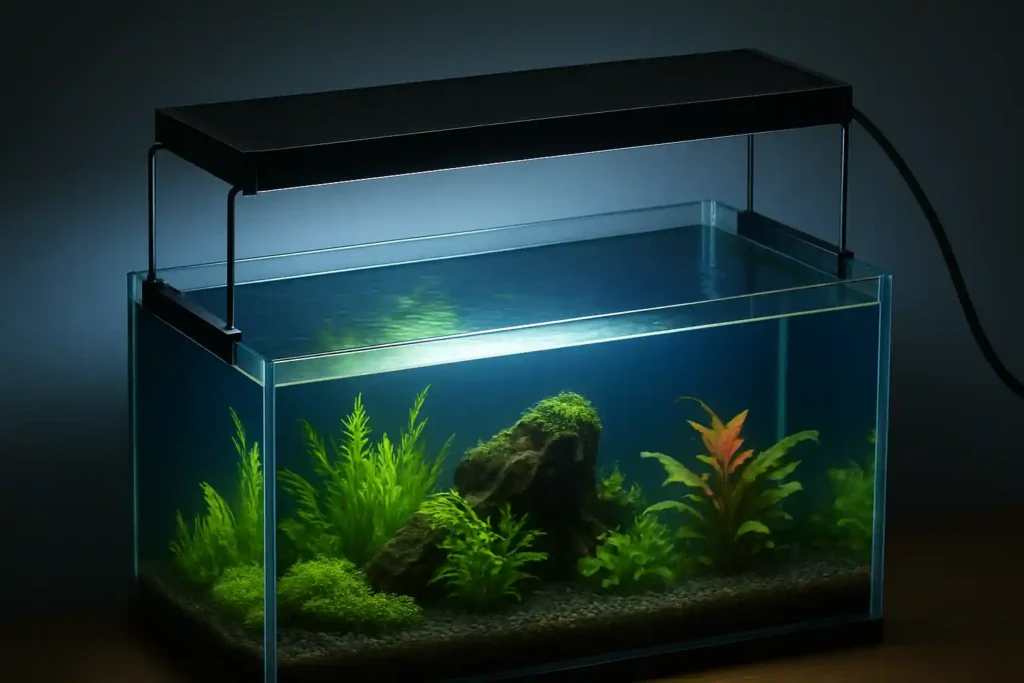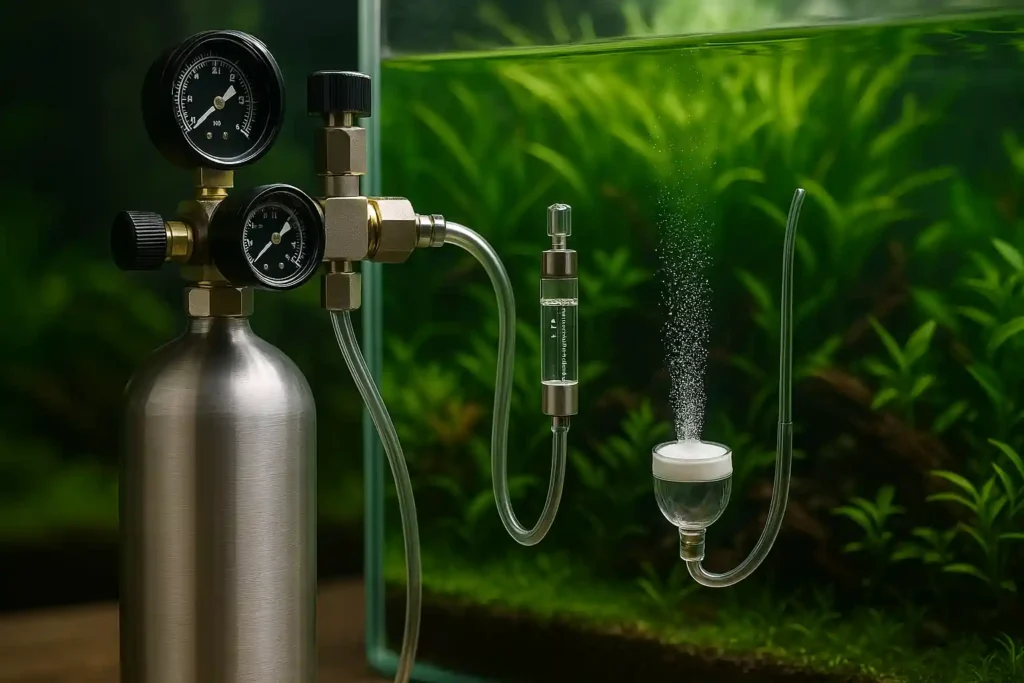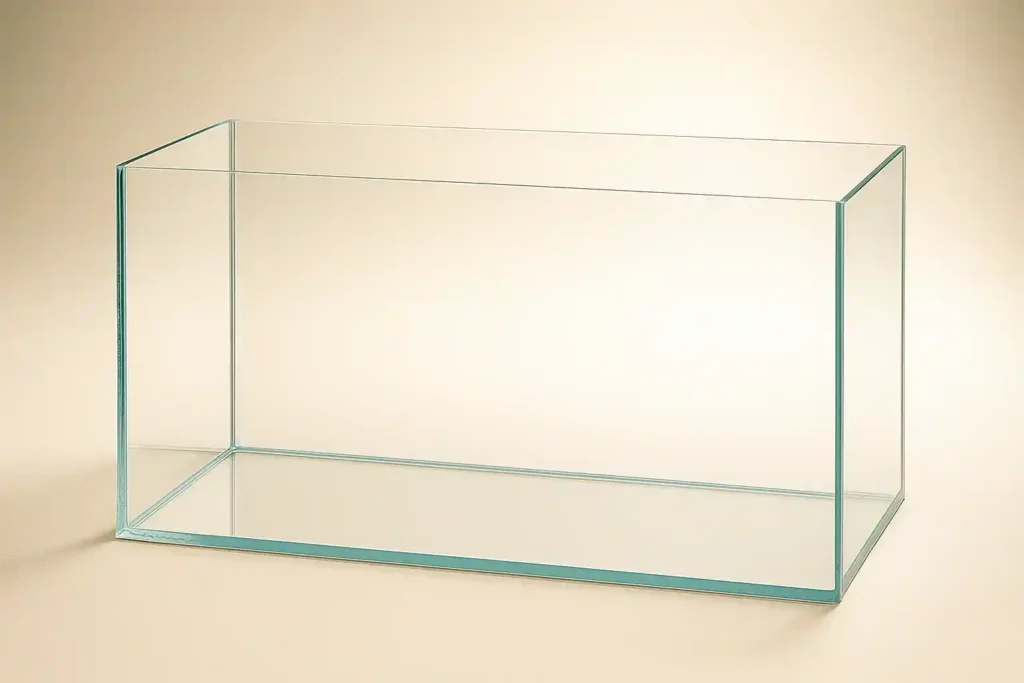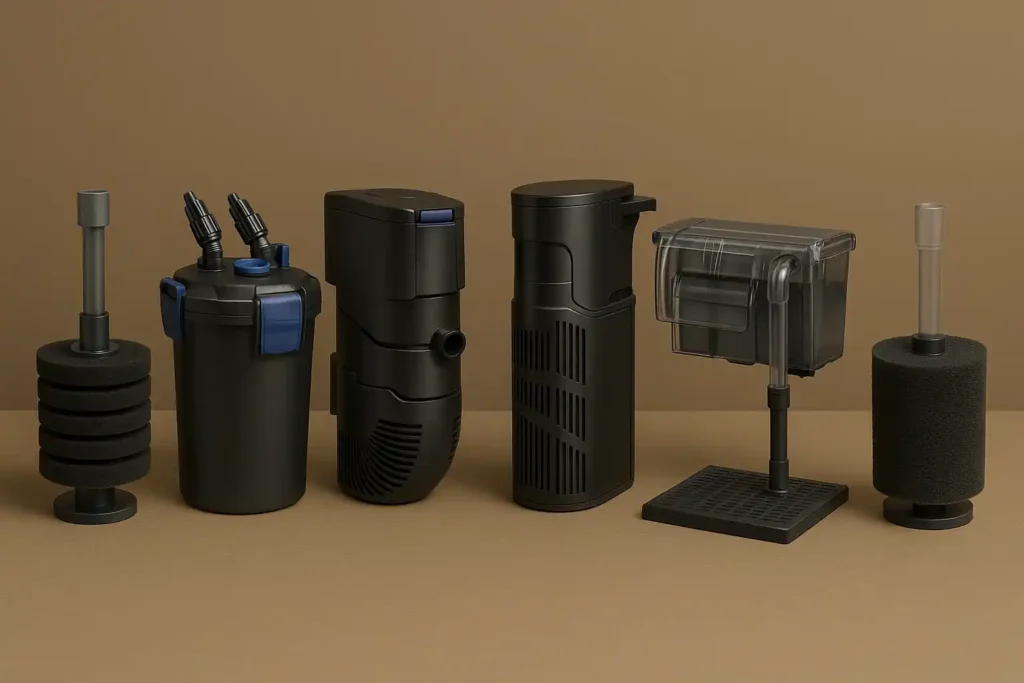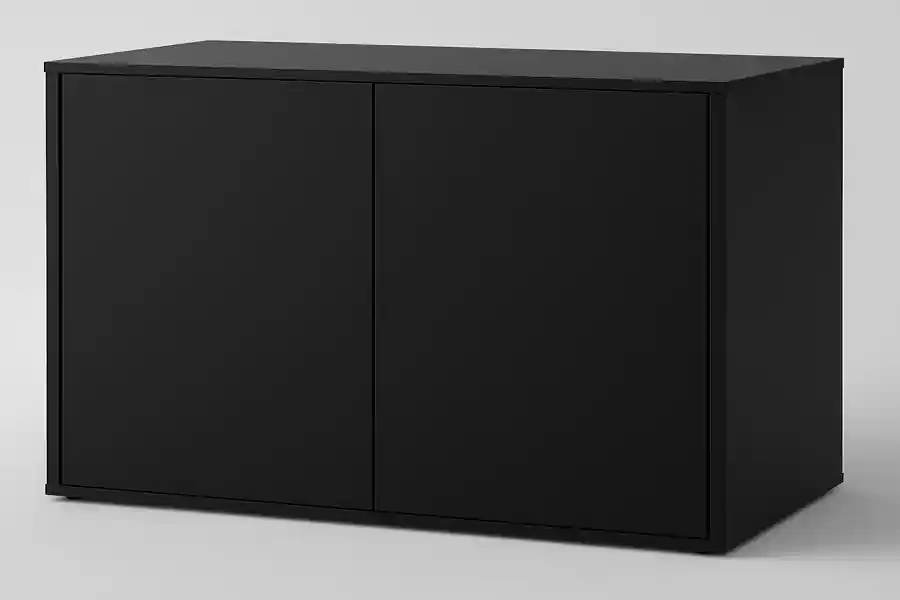
Aquarium Stand Guide: Choosing the Perfect Base for Your Tank
Introduction
Aquarium stands do more than just elevate your tank — they serve as a functional base, a storage solution, and a design feature that can define the aesthetic of your aquascape. Choosing the right stand is essential for safety, convenience, and visual harmony in your aquarium setup.
Whether you’re a beginner setting up your first tank or a seasoned aquascaper upgrading your display, this guide walks you through everything you need to know about aquarium stands — including sizing, materials, sump compatibility, maintenance access, DIY vs. commercial options, and much more.
What you’ll learn in this lesson
- How to choose the right stand based on tank dimensions and weight
- The pros and cons of different stand materials (wood, metal, MDF)
- Why ventilation and cable routing matter
- How to choose sump-compatible and canister filter-friendly stands
- Key safety and leveling requirements for long-term use
- Design and aesthetic tips for matching your home interior
- DIY vs. commercial stands: What to consider
- How to waterproof and maintain your stand
- Space-saving storage hacks
- Best stand brands and customization options
Why Aquarium Stands Matter
Aquarium stands are more than decorative. They:
- Support hundreds of kilos of weight
- Hide unsightly gear (filters, cables, CO₂ tanks)
- Provide extra storage for maintenance tools and food
- Create a clean, integrated look
- Protect your flooring with proper leveling
Matching Stand Size to Tank Dimensions
Key Points to Consider
- Length and Width: The stand should match or slightly exceed the tank’s footprint
- Height: 70–90 cm is ideal for eye-level viewing
- Depth: Allow space for canister filters, cords, and plumbing
Tip: Always measure the tank AND equipment footprint — not just the glass!
Weight Capacity and Load Distribution
Estimated Tank Weight (Including Water, Substrate, Rock)
| Tank Size | Approx. Weight |
|---|---|
| 60x30x30 cm | ~55 kg |
| 90x45x45 cm | ~160 kg |
| 120x50x50 cm | ~300 kg |
| 180x60x60 cm | ~650+ kg |
Make sure your stand:
- Has central support for large tanks
- Uses waterproof plywood or reinforced metal
- Sits level to prevent torsion stress
Material Comparison: MDF, Plywood, Metal, and Solid Wood
| Material | Pros | Cons |
|---|---|---|
| MDF | Affordable, smooth finish | Warps with moisture |
| Plywood | Strong, moisture-resistant | Heavier, more expensive |
| Solid Wood | Beautiful, durable | Can swell in humidity |
| Metal Frame | Ultra-strong, sump compatible | May need aesthetic paneling |
Sump-Ready Stands: What to Look For
- Waterproof base
- Cutouts for plumbing and overflow
- Easy access for filter sock maintenance
- Proper ventilation to avoid mold
Bonus Tip: Add LED lighting inside for better visibility during maintenance.
Canister Filter Friendly Design
- Ensure 45 cm+ of vertical clearance
- Include hose routing holes in the back
- Add vibration dampening pads
- Use sliding trays for filter access
Stand Doors and Accessibility
- Hinged Doors: Traditional, wide access
- Sliding Doors: Space-saving, ideal for narrow rooms
- Push-to-Open: Sleek and handle-free
- Soft-Close: Quiet and safe
Waterproofing and Stand Longevity
Prevention Tips
- Apply marine-grade sealant around edges
- Line base with pond liner or acrylic trays
- Ventilate interior or install fans
- Clean spills immediately
Internal Layout and Storage Ideas
- Pull-out drawers for tools
- Crates/bins for cables and food
- Magnetic strips for scissors/tweezers
- Add towel bar to inside door
Visual Integration With Your Home
Choose a stand that complements your décor:
- Modern: Matte finishes, hidden handles
- Rustic: Natural wood, warm tones
- Minimalist: White/black gloss
- Industrial: Metal + reclaimed wood
Leveling and Floor Safety
- Use adjustable feet or shims
- Foam pads for rimless tanks
- Baseboard under large tanks on soft floors
- Avoid placing directly on carpet
Best Aquarium Stand Brands
- ADA – Premium, minimalist design
- Aquadeco – Custom sizing and materials
- Waterbox – Sump-ready with included plumbing
- OASE ScaperLine – Integrated cable management
- Do!aqua – Simple and affordable
Custom vs. Off-the-Shelf Stands
| Feature | Custom Build | Off-the-Shelf |
|---|---|---|
| Fit | Perfect match | Standard sizes |
| Materials | Full control | Often MDF or mixed |
| Cost | Higher | Lower |
| Aesthetics | Fully customizable | Fixed design options |
DIY Aquarium Stand Tips
- Use 18–21 mm marine plywood
- Apply waterproof primer and sealant
- Reinforce corners with dowels/brackets
- Leave open backs for cables
- Measure 3x, cut once
Electrical and Cable Management
- Add cable grommets or drilled ports
- Use adhesive clips and holders
- Label all plugs for easy ID
- Install GFCI-protected power strip
Ventilation for Heat and Humidity Control
- Passive vents at top and bottom
- USB or 12V fans improve airflow
- Keep sump area unblocked
- Never trap CO₂ cylinders in sealed compartments
Matching Stands for Nano and Desktop Aquariums
- Floating wall shelves
- Modified IKEA cabinets (e.g., Eket)
- End tables with storage
- Wooden cube stands with hidden tray
Common Mistakes to Avoid
- Stand too small for tank weight
- No ventilation holes
- Particleboard in humid rooms
- Ignoring hose/equipment clearance
- Failing to waterproof edges
Aquarium Stand Lighting and Tech Integration
- Add motion-sensor LED strips
- Mount temperature or pH controllers
- Use cable pass-throughs for neat setup
- Hide controllers inside door compartments
Aquarium Stand Upgrades Over Time
- Install shelves or drawers
- Add door dampeners
- Mount CO₂ gear or dosing systems
- Repaint or replace doors for fresh look
Sustainable and Eco-Friendly Stand Options
- FSC-certified wood
- Non-toxic sealants and low-VOC paints
- Upcycle old furniture with added reinforcement
- LED lighting for energy efficiency
- Brands using sustainable sourcing
Quick Takeaways
- Always match stand weight capacity to your tank
- Plywood is the gold standard for durability
- Include ventilation, cable routing, and waterproofing
- DIY builds offer flexibility — plan carefully
- Style matters — integrate your stand with your space
Conclusion
A well-designed aquarium stand is the backbone of your aquascape — both literally and visually. Beyond holding weight, it hides equipment, organizes tools, and integrates seamlessly into your living space.
Whether you go custom, buy a premium brand, or build your own, the right stand improves your aquarium experience, simplifies maintenance, and elevates the beauty of your setup.
💬 Join the Conversation
Tag us on Instagram @AquariumLesson — we’d love to see your aquarium stand builds and designs!
👉 What’s your favorite stand style — minimalist, rustic, or DIY? Share it in the comments!
FAQ
What material is best for aquarium stands?
Plywood is the strongest and most moisture-resistant option. Avoid MDF in high-humidity environments.
Can I put an aquarium on regular furniture?
Only if it’s rated for the full tank weight. Most household furniture is not.
Do I need a stand for small aquariums?
Not necessarily, but they provide useful storage and better viewing angles.
How can I waterproof my aquarium stand?
Seal the edges, line the base, and ensure good airflow.
What’s the ideal stand height?
70–90 cm is typical for eye-level viewing when standing or seated.
References
- The Green Machine – Aquarium Cabinet Styling Guide
→ Covers cabinet aesthetics, matching aquascapes, and premium stand options like ADA. - Framing Tech – Choosing the Right Aquarium Stand
→ Explains structural support, tank weight, and importance of level installation. - Bulk Reef Supply – How to Plumb a Reef Tank Sump
→ Detailed guide on sump-ready cabinets and plumbing integration. - Woodshop Diaries
→ Building custom aquarium cabinets using plywood and sealants. - Reef2Reef Forum – Aquarium Cabinet Design Discussion
→ Real-user cabinet builds, customization tips, and troubleshooting discussions.

